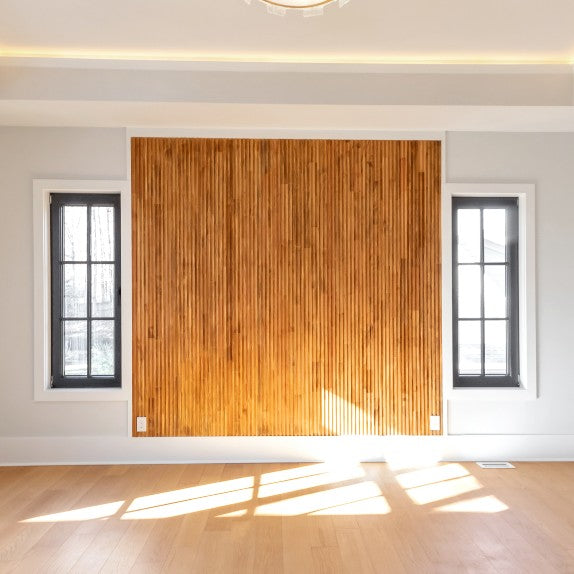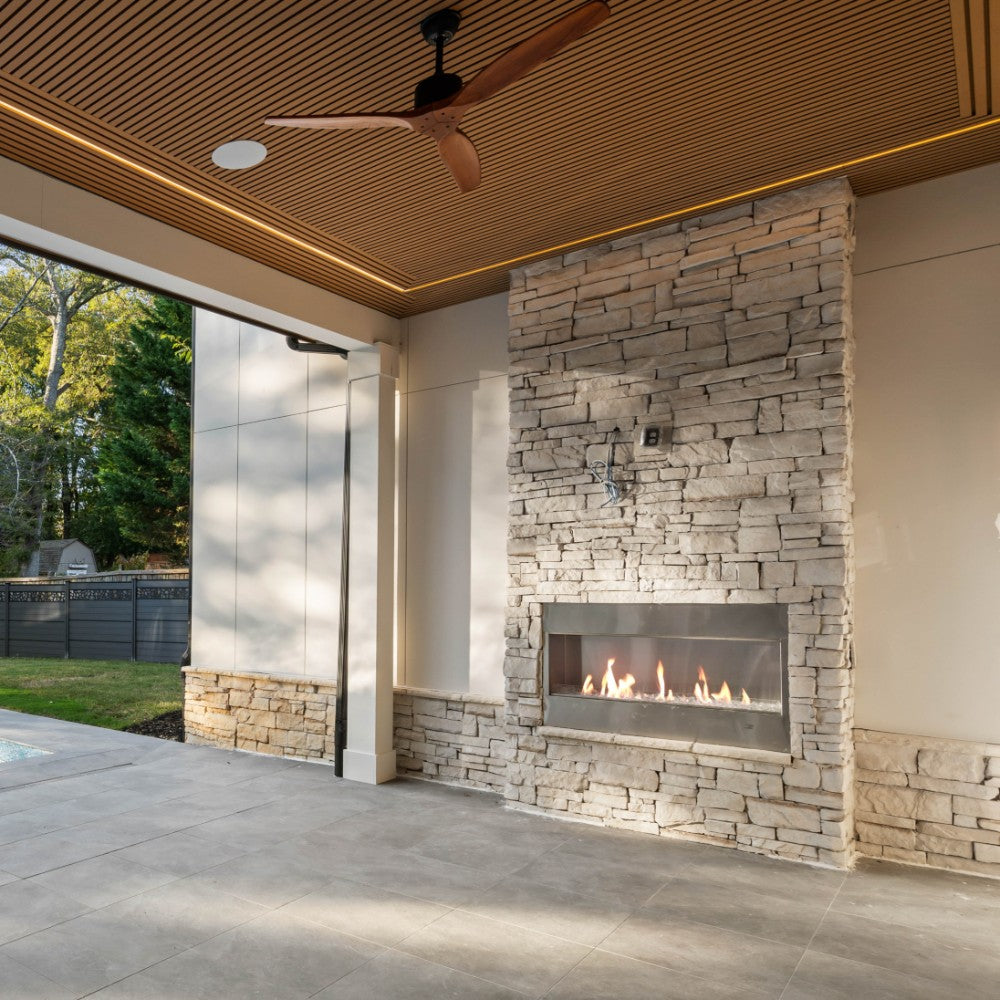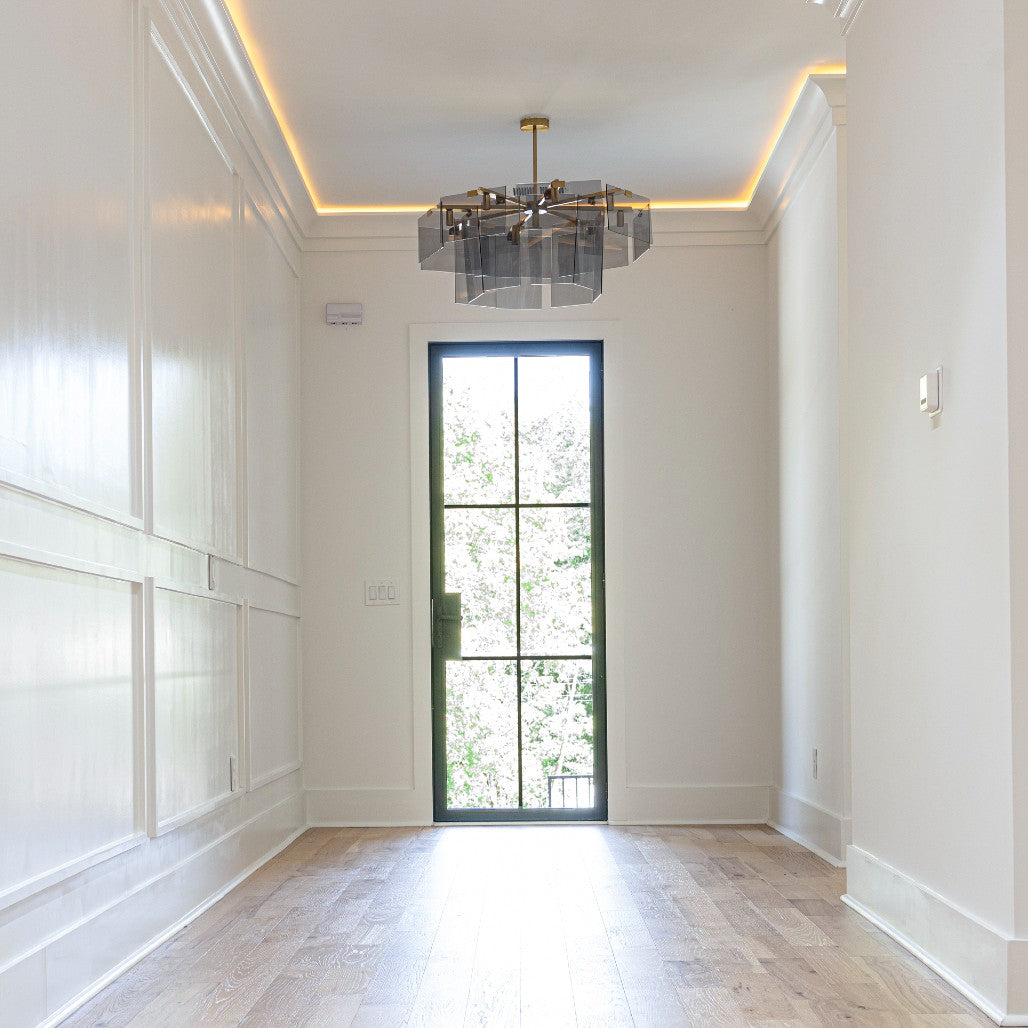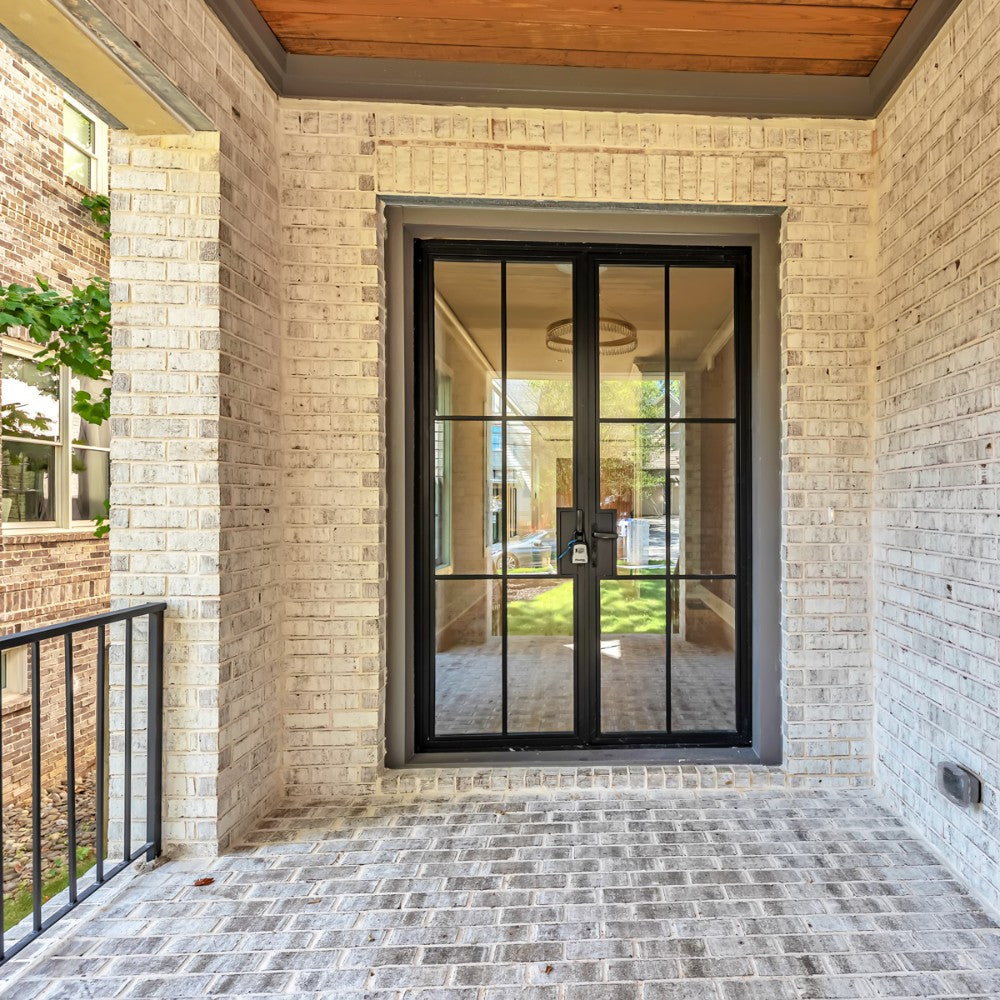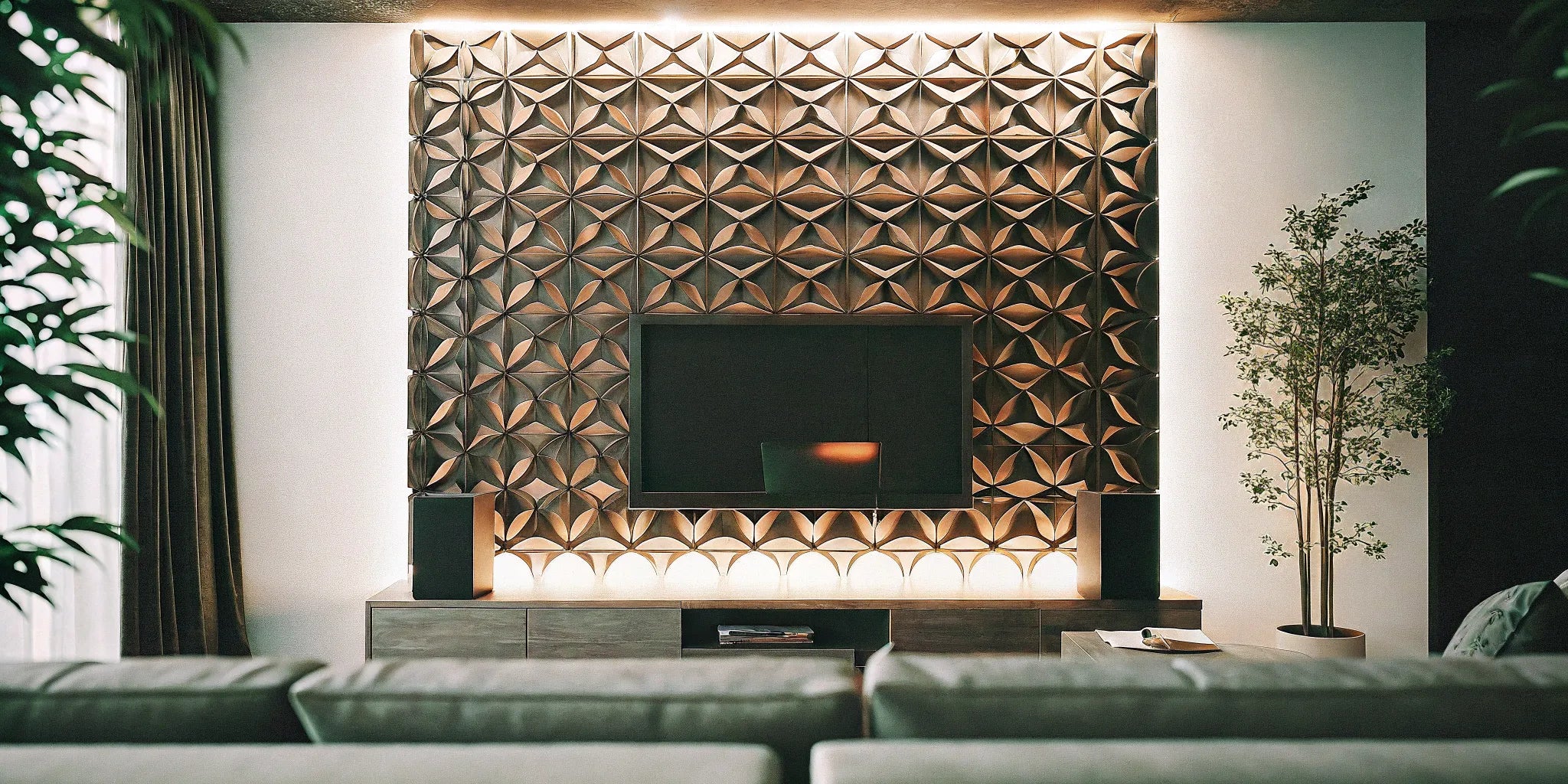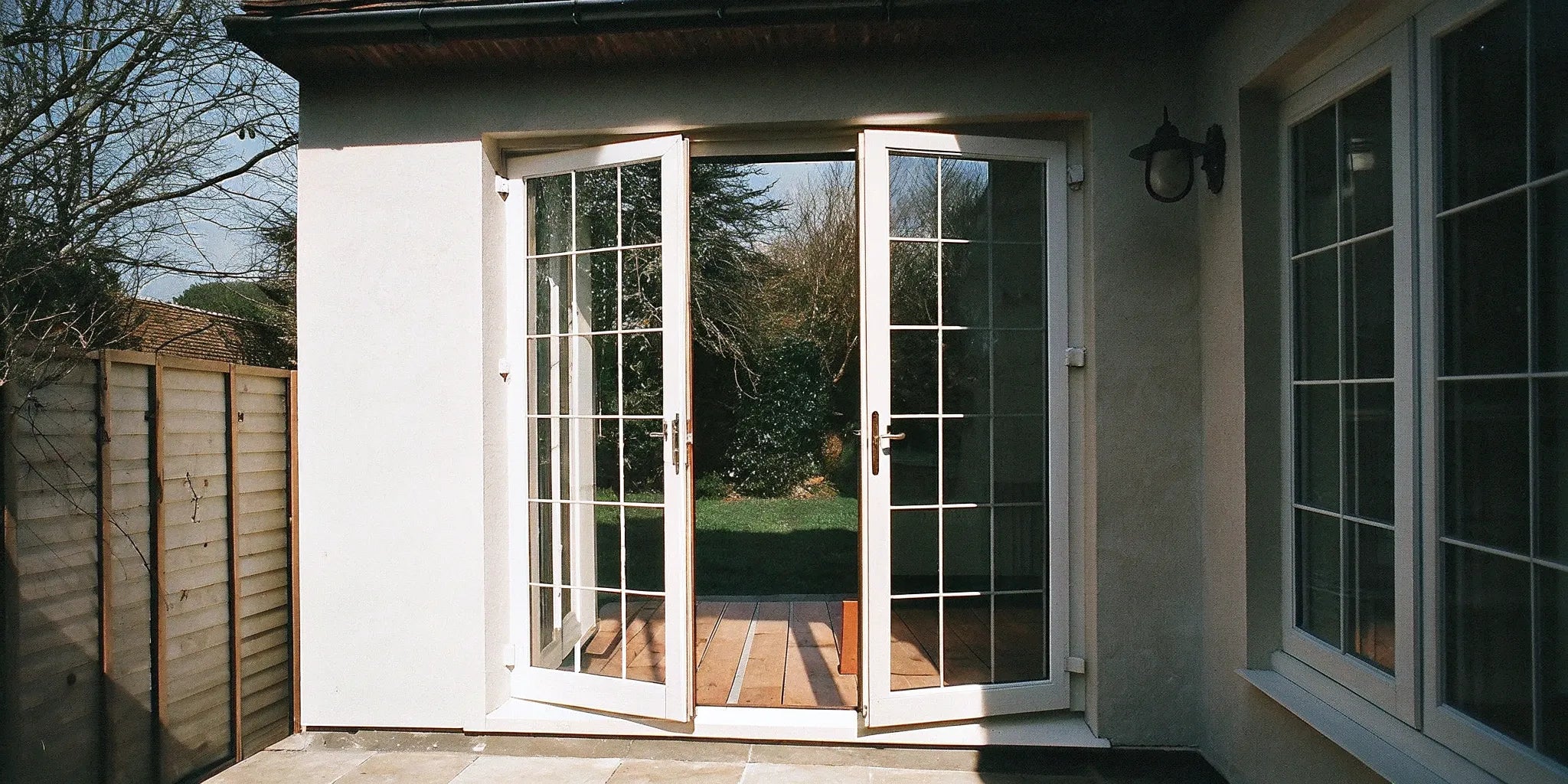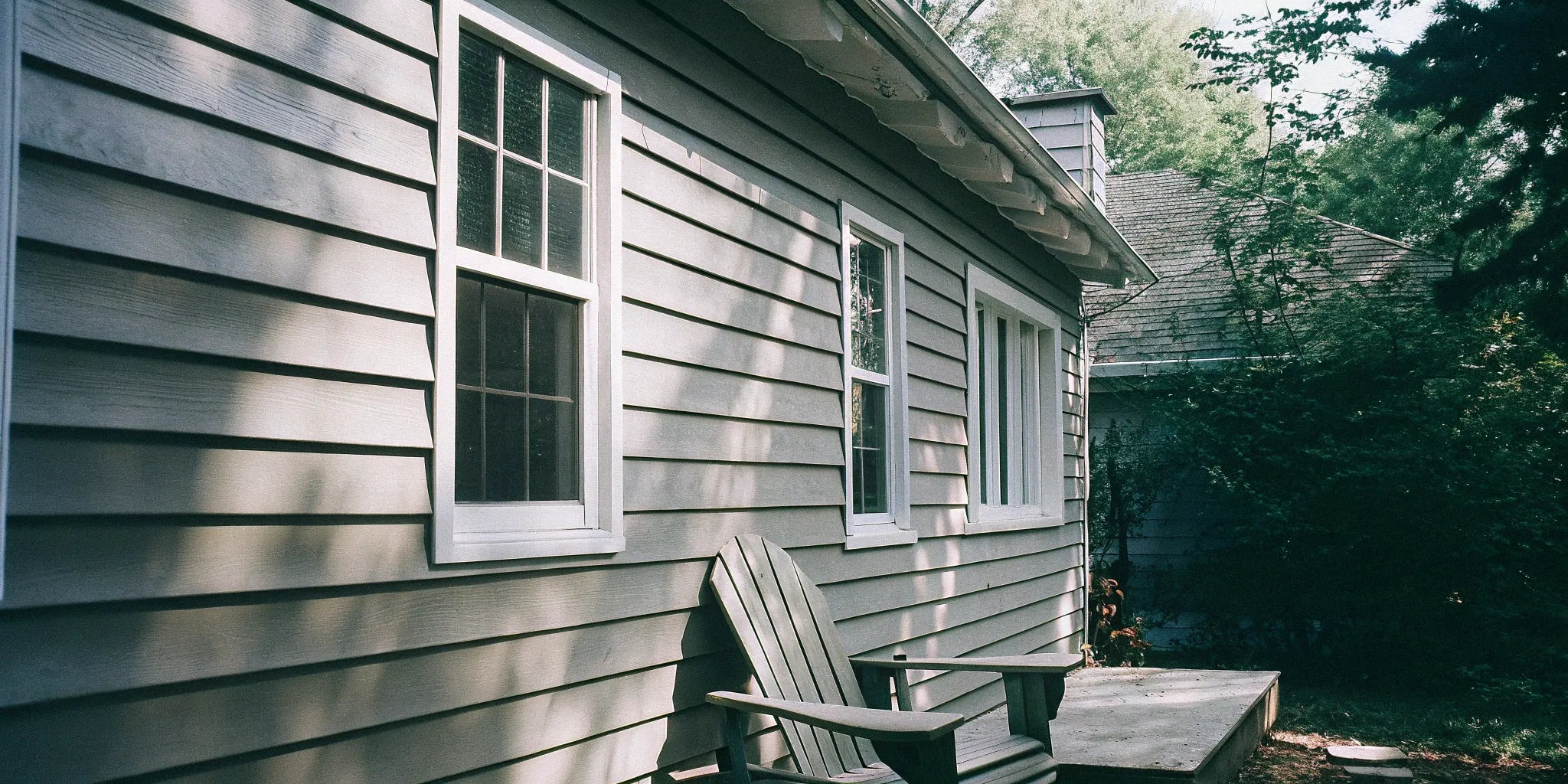
Exterior Shiplap Siding: A Complete Project Guide
Some designs are so practical and timeless they stick around for centuries, evolving to fit new styles and technologies. That’s the story of shiplap. Originally designed to make the hulls of ships watertight, its clever overlapping boards proved just as effective at protecting homes on land. Today, exterior shiplap siding has moved far beyond its rustic, functional roots to become a favorite of architects and designers. It’s celebrated for its clean lines and incredible versatility, capable of creating looks that range from a cozy coastal cottage to a sharp, minimalist facade. We’ll explore how this classic material has been updated for modern homes, looking at new, durable materials and creative ways to use it to add character and protection to your exterior.
Key Takeaways
- Match Your Material to Your Lifestyle: Your choice of shiplap—from natural wood to low-maintenance composites or durable fiber cement—should align with your local climate, budget, and how much upkeep you're willing to perform.
- Prioritize a Flawless Installation: The performance of your siding depends entirely on how it's installed. A proper weather-resistant barrier, correct flashing, and a complete seal are essential for preventing moisture damage and ensuring a long-lasting finish.
- Define Your Home's Style and Value: Simple design decisions, like installing boards horizontally for a classic look or vertically for a modern one, have a major impact. This upgrade not only enhances curb appeal but also adds significant long-term value to your home.
What Exactly Is Exterior Shiplap Siding?
If you’re looking for a way to give your home’s exterior a clean, classic, and durable finish, shiplap siding is a fantastic choice. At its core, exterior shiplap is a type of siding where each board has a special interlocking joint, called a rabbet. This design allows the boards to overlap and fit snugly together, creating a tight seal that’s excellent at keeping out rain, wind, and pests. This clever construction is what sets it apart from other siding types and gives it that distinct, streamlined appearance.
Originally used to make ships watertight, shiplap has since become a go-to for home exteriors. It offers a perfect blend of form and function, providing robust protection while adding major curb appeal. The clean lines can make a home feel modern and fresh or give it a timeless, rustic charm, depending on the material and finish you choose. Whether you're building a new home or giving your current one a facelift, shiplap wall panels are a versatile option that delivers on both style and performance.
From Classic to Contemporary: A Quick History
Shiplap’s story begins on the water. As the name suggests, it was first used to build ships, where its overlapping boards created a watertight hull that could withstand the harsh conditions of the sea. This practical design eventually made its way to land, becoming a popular choice for barns, sheds, and homes. Its durability and weather resistance made it a practical solution for protecting structures. Today, shiplap has moved beyond its purely functional roots to become a sought-after design element for its timeless appeal and ability to suit a wide range of architectural styles, from modern farmhouses to sleek, contemporary builds.
What's It Made Of? Exploring Your Material Options
Traditionally, shiplap was made from wood, with pine and cedar being common choices. Today, you have a much wider array of materials to consider. Natural hardwoods like Ipe and Cumaru offer incredible durability and a rich, beautiful finish. For a lower-maintenance option, you can explore composite materials. Our Exterior Shiplap Cladding Wall Panels, for example, are made from a Wood Plastic Composite (WPC) that resists rot, insects, and moisture without needing regular staining or sealing. Other popular choices include fiber cement and vinyl, which also provide long-lasting performance with minimal upkeep, giving you plenty of options to match your home’s needs and your personal style.
How Shiplap Complements Your Home's Style
One of the best things about shiplap is its incredible versatility. It can completely transform the look of a home, adding character and texture that flat siding just can't match. The clean, defined lines create a sense of order and rhythm, whether you install them horizontally for a classic look or vertically for a more modern, dramatic effect. This adaptability allows shiplap to enhance the charm of nearly any architectural style. It can give a new build a cozy, farmhouse feel or lend a contemporary home a sleek, sophisticated facade. No matter your vision, shiplap siding is a reliable way to achieve a polished exterior design.
The Eco-Friendly Side of Shiplap
Choosing siding doesn't have to mean compromising on your environmental values. If you love the look of wood, you can seek out products sourced from sustainably managed forests. Even better, many modern shiplap options are designed with sustainability in mind. Materials like Wood Plastic Composite (WPC) often use recycled plastics and wood fibers, reducing waste and preserving natural resources. There are even innovative "tree-free" products on the market, like ACRE shiplap, which is made from upcycled rice hulls. These alternatives offer the beautiful appearance of wood with superior performance and a much smaller environmental footprint, making them a smart choice for any green-minded homeowner.
How to Choose the Right Shiplap for Your Home
Picking the right shiplap for your home’s exterior is a big decision. It’s not just about looks—it’s about finding a material that fits your budget, climate, and how much time you want to spend on upkeep. With so many options out there, from classic natural wood to modern composites, it’s easy to feel a little overwhelmed. Let’s walk through the most popular materials so you can feel confident in your choice. We’ll look at the benefits and drawbacks of each, consider how your local weather plays a role, and break down the costs you can expect.
The Pros and Cons of Natural Wood
There’s a reason natural wood is a timeless choice for siding—it offers a warm, classic beauty that’s hard to replicate. If you go this route, cedar is often considered the best type of wood for the job. It’s incredibly durable, long-lasting, and naturally resists water, making it a fantastic investment for outdoor use or even in high-moisture areas like bathrooms. For a more budget-friendly option, pine is a popular choice. While it doesn’t have the same strength or longevity as cedar, it still delivers that beautiful wood grain look. Keep in mind that all-natural wood requires regular maintenance, like sealing and staining, to protect it from the elements.
Low-Maintenance Living: Vinyl and Synthetics
If the thought of regular maintenance makes you tired, synthetic materials like vinyl or composite shiplap might be your perfect match. Composite siding, which is made from a mix of wood pulp and plastic, is a fantastic low-maintenance alternative. It’s designed to resist rot and pests, and it holds paint exceptionally well, so you won’t be looking at frequent touch-ups. These materials are engineered for durability and often come in a wide range of pre-finished colors, making installation a little simpler. They give you the look of wood without the constant upkeep, freeing up your weekends for more important things.
Built to Last: The Case for Fiber Cement
For homeowners who prioritize durability above all else, fiber cement boards are an excellent shiplap material. Made from a mix of cement, sand, and cellulose fibers, this siding is incredibly tough. It’s resistant to fire, rot, and insects, and it can stand up to even the harshest weather conditions without warping or cracking. While it’s a heavy-duty material, it’s important to note that it contains crystalline silica, so professional installation with proper safety measures is key. Once it’s up, however, fiber cement siding provides a strong, long-lasting exterior that requires very little maintenance over its lifespan.
Match Your Siding to Your Climate
Your local weather should play a huge role in your shiplap decision. If you live in a rainy or humid climate, moisture is your biggest enemy. For natural wood shiplap, proper installation and sealing are absolutely critical. If water gets trapped behind the boards, it can lead to rot, mold, or warping, which can be a costly fix down the road. In these damp environments, fiber cement or composite materials are often a safer bet since they are inherently moisture-resistant. For those in dry, sunny climates, wood can be a great option, but you’ll want to choose a finish with UV protection to prevent fading and discoloration over time.
A Look at the Costs
Budget is always a key factor in any home renovation project. For exterior shiplap, costs can be broken down into two main categories: materials and installation. On average, you can expect material costs to range from $2.50 to $7.00 per square foot, depending on whether you choose an affordable pine or a premium cedar or composite. Professional installation will typically add another $1.00 to $5.00 per square foot. If you’re a contractor or trade professional, remember to look for suppliers that offer bulk discounts. For example, our trade program is designed to help you get the best materials at a competitive price for your projects.
Your Guide to a Flawless Installation
Once you’ve chosen your shiplap, it’s time for the most critical phase: installation. Getting this part right is the key to ensuring your siding not only looks fantastic but also protects your home for years to come. Proper installation prevents issues like moisture damage and warping, giving you a durable, long-lasting finish. Let’s walk through the essential steps and considerations for a smooth and successful project.
Should You DIY or Hire a Pro?
Deciding whether to install the shiplap yourself or hire a professional is your first big decision. If you’re an experienced DIYer with the right tools and a good amount of patience, you might feel confident tackling this project. The satisfaction of doing it yourself is a huge plus. However, installing siding correctly is a precise job. As experts often say, it's best to hire professionals for installation to make sure it's done right. A pro will have the experience to handle tricky cuts, ensure everything is weatherproof, and get the job done efficiently. If you’re on the fence, consider getting a few quotes from local contractors to weigh your options.
Your Essential Toolkit and Materials List
Before you begin, gathering all your tools and materials will make the process much smoother. You’ll need your exterior shiplap cladding, of course, but don’t forget the supporting cast. Your toolkit should include a miter saw for clean cuts, a level, a tape measure, a nail gun, and a caulk gun. Just as important are the materials that go behind the siding. Proper insulation, weatherproofing, and sealing are crucial for protecting your home from the elements. Make sure you have a quality house wrap, the correct flashing for windows and doors, and a durable exterior-grade sealant to finish the job.
Key Steps for a Secure Installation
A successful shiplap installation is all about precision and process. Start by preparing your exterior walls, ensuring they are clean, dry, and covered with a weather-resistant barrier. Begin installing your first row of shiplap at the bottom of the wall, making sure it’s perfectly level—this first board sets the standard for the entire wall. As you work your way up, the panels need to be lined up perfectly for the best look and performance. Secure each board according to the manufacturer’s guidelines, typically by nailing through the tongue so the next board hides the fastener. Take your time, measure twice, and check for level frequently.
How to Keep Moisture Out
One of the most important goals of siding is to keep water away from your home’s structure. If water gets behind wood shiplap, it can cause rot or warping, so it needs to be installed and sealed correctly to prevent this. Your first line of defense is the weather-resistant barrier applied to the sheathing. Next, proper flashing around windows, doors, and corners is non-negotiable—it directs water away from these vulnerable areas. Finally, once all the boards are up, use a high-quality exterior caulk to seal all gaps, seams, and joints. This final step creates a watertight seal that protects your investment. For areas with high moisture, you might also consider materials like fiber cement boards for added durability.
Common Installation Mistakes to Avoid
Even the best materials can fail if not installed correctly. Unfortunately, bad installation is a problem that affects all types of siding. One common mistake is improper nailing—driving nails too deep can crack the board, while not driving them deep enough leaves them exposed. Another issue is failing to leave a small expansion gap where boards meet trim or each other; this can cause buckling as the material expands and contracts with temperature changes. Finally, watch out for boards that aren't level. Even a slight error at the bottom can become a very noticeable slant by the time you reach the top of the wall.
Getting a Clean Look with Hidden Fasteners
For a truly modern and seamless aesthetic, consider using hidden fasteners. This method secures the shiplap without any visible nails or screws on the face of the boards, creating a clean, uninterrupted look. Some systems use special screws and plugs made from the same siding material to make fasteners virtually disappear. Another common technique is to nail through the tongue of the shiplap board at an angle, so the groove of the next board covers the nail head. This approach is perfect for a high-end finish and works beautifully with a variety of wall panels, letting the texture and color of the material take center stage.
Find Your Perfect Shiplap Style
Once you’ve settled on the right material, the fun part begins: designing the look. Shiplap is incredibly versatile, and a few key decisions can completely transform your home’s exterior from a classic farmhouse to a sleek, modern retreat. The direction you install the boards, the color you choose, and the surrounding architectural details all play a huge role in the final outcome. Let’s walk through the most important style choices you’ll make to ensure your shiplap siding perfectly captures your vision.
How to Pick the Perfect Color
One of the best things about shiplap is that it’s a blank canvas. You can paint or stain it any color you can dream of, or you can let the natural beauty of the wood shine through. For a timeless, coastal feel, you can’t go wrong with a crisp white or a soft gray. If you’re aiming for a more dramatic, contemporary look, consider a bold charcoal or even black. Stains are a fantastic option if you want to highlight the wood’s natural grain and texture. Our Exterior Shiplap Cladding Wall Panels come ready for your custom finish, giving you complete creative control over your home’s curb appeal.
Horizontal vs. Vertical: Which Way to Go?
The orientation of your shiplap boards has a major impact on your home’s visual presence. Installing them horizontally is the traditional choice, creating a classic look that can make your house appear wider and more grounded. For a modern twist, consider a vertical installation. This draws the eye upward, making your home feel taller and more stately. Because the panels are designed to fit together snugly, installation can be a smooth and efficient process no matter which direction you choose. For a truly custom design, you can even install boards diagonally to create a unique, eye-catching pattern.
Creating a Sleek, Modern Exterior
If clean lines and a minimalist vibe are what you’re after, shiplap is an excellent choice. To achieve a modern look, opt for a vertical installation with smooth-faced boards. This emphasizes height and creates a streamlined, sophisticated facade. Dark, moody colors like deep gray or black are popular for contemporary homes, as they create a striking contrast with natural elements like wood or stone. The subtle shadow line created by shiplap’s rabbet joint adds just enough texture and dimension to keep the design interesting. For even more texture, consider pairing it with our Exterior Fluted Slat Wall Panels.
Nailing the Classic, Timeless Look
For that quintessential farmhouse or charming coastal cottage look, horizontal shiplap is the way to go. This classic orientation feels welcoming and familiar. Pair it with a timeless color like white, cream, or a light pastel blue to complete the aesthetic. The special interlocking joints of shiplap siding do more than just look good; they create a tight seal that protects your home from the elements while delivering that distinct, classic appearance. This style works beautifully on both historic homes and new builds aiming for a timeless feel. Explore our full range of wall panels to find the perfect foundation for your classic design.
A Quick Look at Top Brands
While there are many brands out there, the most important decision is choosing the right material for your project and climate. High-quality exterior shiplap is often made from durable hardwoods that can stand up to the elements. At USA Builders Depot, we source premium materials to ensure your siding is built to last. Our Unfinished Wood Wall Panels give you the flexibility to choose top-tier wood and finish it to your exact specifications. We also offer innovative options like Interior WPC Fluted Slat Wall Panels, which provide the look of wood with the low-maintenance benefits of a composite material, perfect for covered porches or accent areas.
Keep Your Siding Looking New: A Simple Care Guide
You’ve invested in beautiful shiplap siding to give your home that perfect finish, and the good news is, it’s built to last. While materials like our Exterior Shiplap Cladding Wall Panels are designed for durability, a little routine care will keep them looking pristine for decades. Think of it less as a chore and more as a simple way to protect your investment and maintain your home’s curb appeal. Shiplap siding doesn't demand a lot of maintenance, but consistent care is the key to helping it last longer and look its best. A quick inspection twice a year and an annual cleaning are usually all it takes to catch minor issues before they become bigger problems.
This proactive approach saves you time and money in the long run by preventing small imperfections from turning into costly repairs. Whether you're a homeowner proud of your new exterior or a contractor advising a client, understanding these basic upkeep steps is essential. From washing away grime to touching up small scuffs, staying on top of these simple tasks ensures your siding remains a standout feature of your home. In the following sections, we’ll walk through a straightforward care guide to make maintenance feel effortless and keep that fresh, clean look you love.
Your Year-Round Maintenance Checklist
A simple, seasonal approach is the easiest way to stay on top of siding care. At least twice a year—I recommend spring and fall—take a slow walk around your home and look everything over. Check for any boards that might look warped or cracked. Inspect the paint or stain for any peeling or chipping, especially on sides that get a lot of direct sun or harsh weather. You’ll also want to look at the caulking around windows, doors, and corner trim to make sure it’s still intact. This quick visual checkup only takes a few minutes and is your best tool for catching small issues early.
Easy Cleaning and Upkeep Tips
One of the most effective things you can do for your siding is to give it a gentle wash once a year. All you need to do is wash it with a simple solution of mild soap and warm water to remove any buildup of dirt, grime, and mildew. Use a soft-bristle brush or a cloth for the job, working in sections from the top down. Be sure to rinse thoroughly with a garden hose when you’re done. I’d advise against using a high-pressure washer, as the intense spray can damage the wood or finish and force water into places it shouldn’t be. A little bit of gentle scrubbing is all it takes to refresh your home’s exterior.
Protecting Your Siding from Water Damage
Water is the number one enemy of any exterior cladding, and shiplap is no exception. If water gets behind wood shiplap, it can cause rot or warping, so it’s critical that it’s installed and sealed correctly from the start. Your ongoing task is to maintain that seal. As you do your yearly inspections, pay close attention to the caulking around trim and joints. If you spot any cracks or gaps, scrape out the old caulk and apply a fresh bead of high-quality exterior sealant. For projects in especially wet climates, you might consider materials like Fiber Cement Boards, which offer exceptional resistance to moisture and rot.
How to Fix Minor Damage
Life happens, and occasionally your siding might get a small ding or scratch. Don’t worry—these are usually easy fixes. For minor cracks or holes, you can use a quality exterior wood filler. Just clean the area, apply the filler, and sand it smooth once it’s dry. Then, you can prime and apply a fresh coat of touch-up paint to blend it in perfectly. If a board has more significant damage, you might need to replace it. Over time, you may also need to sand or replace damaged pieces, but addressing these issues as they appear will keep your entire exterior looking sharp and well-maintained.
Simple Ways to Extend Its Lifespan
Beyond cleaning and repairs, the finish on your siding is its primary shield. Regular painting or staining is essential to protect it from weather and pests. Depending on your climate and the type of finish used, you should plan on reapplying a fresh coat every five to ten years. This protective layer prevents moisture from seeping in and blocks UV rays from breaking down the wood fibers. Another simple tip is to keep shrubs, trees, and other landscaping trimmed back a few inches from your siding. This allows for proper airflow, which helps the siding dry out quickly after it rains and prevents mildew from taking hold.
The Financial Side: Cost vs. Value
Choosing new siding is a big decision, and the budget is always a major part of the conversation. It’s not just about the upfront cost; it’s about understanding the long-term value you’re adding to your home. Exterior shiplap is an investment that pays off in curb appeal, durability, and even potential energy savings. Let’s break down the numbers so you can see the full picture, from material and labor costs to the return you can expect down the road.
Breaking Down Material Costs
The material itself is your first major expense. On average, you can expect exterior shiplap siding to cost between $2.50 to $7.00 per square foot. The final price tag really depends on the material you choose. Natural wood options like cedar or pine often sit at the higher end of the spectrum, while fiber cement or composite materials can be more budget-friendly. Our Exterior Shiplap Cladding offers a durable and stylish option that delivers a high-end look. Remember to factor in finishes like paint or stain, which will also add to your total material cost.
What to Expect for Installation Costs
Unless you’re a seasoned DIYer, you’ll likely hire a professional for installation, which typically runs from $1.00 to $5.00 per square foot. This cost can fluctuate based on your location, the complexity of your home’s architecture, and whether your contractor needs to remove old siding first. While it might be tempting to cut corners here, a flawless installation is crucial for your siding’s performance and longevity. If you’re a trade professional, you can apply for our trade program to access bulk pricing that helps keep project costs in check.
Can Shiplap Lower Your Energy Bills?
Here’s a benefit you might not have considered: shiplap siding can contribute to better energy efficiency. It adds an extra layer of insulation to your home’s exterior, which helps regulate the indoor temperature. This added barrier can keep your home cooler in the summer and warmer in the winter, potentially reducing the strain on your HVAC system. Over time, this improved thermal performance can lead to noticeable savings on your energy bills, making shiplap a smart choice that’s also comfortable to live with.
Will Shiplap Increase Your Home's Value?
Absolutely. Exterior shiplap siding is a fantastic investment that enhances both your home's appearance and its defense against the elements. The clean lines and timeless appeal create instant curb appeal, making your property stand out in the neighborhood. Potential buyers see a home with new, quality siding as well-maintained and protected. This upgrade not only makes your home more enjoyable for you but can also contribute to a higher resale value when it’s time to sell, making it a financially sound decision for the future.
A Note on Homeowners Insurance
While new siding might not directly lower your insurance premium, it plays a key role in protecting your home from the kinds of damage that lead to claims. Proper installation and regular maintenance are essential for preventing issues like water intrusion and rot, which can cause major structural problems. By ensuring your shiplap is correctly installed and cared for, you’re safeguarding your home against costly repairs. A well-protected home is less of a risk, which is always a positive from an insurer’s perspective and helps you avoid claims that could raise your rates.
Related Articles
- Shiplap Wall Panels: Your Ultimate 2025 Guide
- What is black shiplap? Using Shiplap in Interior Design
Frequently Asked Questions
What's the most durable, low-maintenance shiplap material? If your goal is to install siding and then forget about it, fiber cement or a wood-plastic composite (WPC) are your best bets. These materials are engineered to resist the things that plague natural wood, like rot, insects, and moisture damage. They won't warp or crack under harsh weather, and they hold paint for a very long time, which means you won't be spending your weekends on touch-ups. While natural wood is beautiful, it requires consistent upkeep to stay that way, making these synthetic alternatives the clear winner for low-maintenance living.
Can I install shiplap directly over my existing siding? While it might seem like a tempting shortcut, it's almost always a bad idea. Installing new siding over old can trap moisture, leading to rot and mold issues you won't see until they become serious problems. It's best to remove the old siding completely. This allows you to inspect the wall sheathing underneath for any damage and make necessary repairs. It also ensures you have a flat, solid surface to work with, which is critical for a secure and professional-looking installation.
Is vertical or horizontal shiplap better for weather protection? When installed correctly, both orientations do an excellent job of protecting your home. Horizontal shiplap is the traditional choice and is naturally effective at shedding water downward from one board to the next. Vertical shiplap can also be highly weather-resistant, but the installation details are even more critical. Proper flashing at the top and bottom of the wall is essential to ensure water doesn't get trapped in the channels. Ultimately, the quality of the installation matters more than the direction of the boards.
How often will I really need to repaint or restain my wood shiplap? The general guideline is every five to ten years, but your local climate is the biggest factor. If your home gets intense, direct sunlight or a lot of rain and snow, you'll likely be on the shorter end of that range. A high-quality paint or stain job from the start can definitely extend the time between refinishing. Think of it as your siding's first line of defense—staying on top of it prevents the wood itself from taking a beating from the elements.
Can I use interior shiplap on the outside of my house? Definitely not. It’s crucial to use materials specifically rated for exterior use. Interior shiplap is not designed to handle moisture, temperature fluctuations, or UV exposure from the sun. If you use it outside, it will likely warp, rot, and deteriorate very quickly, leading to a costly and frustrating replacement project. Exterior-grade products are made with different materials and treatments precisely so they can stand up to the weather for decades.


